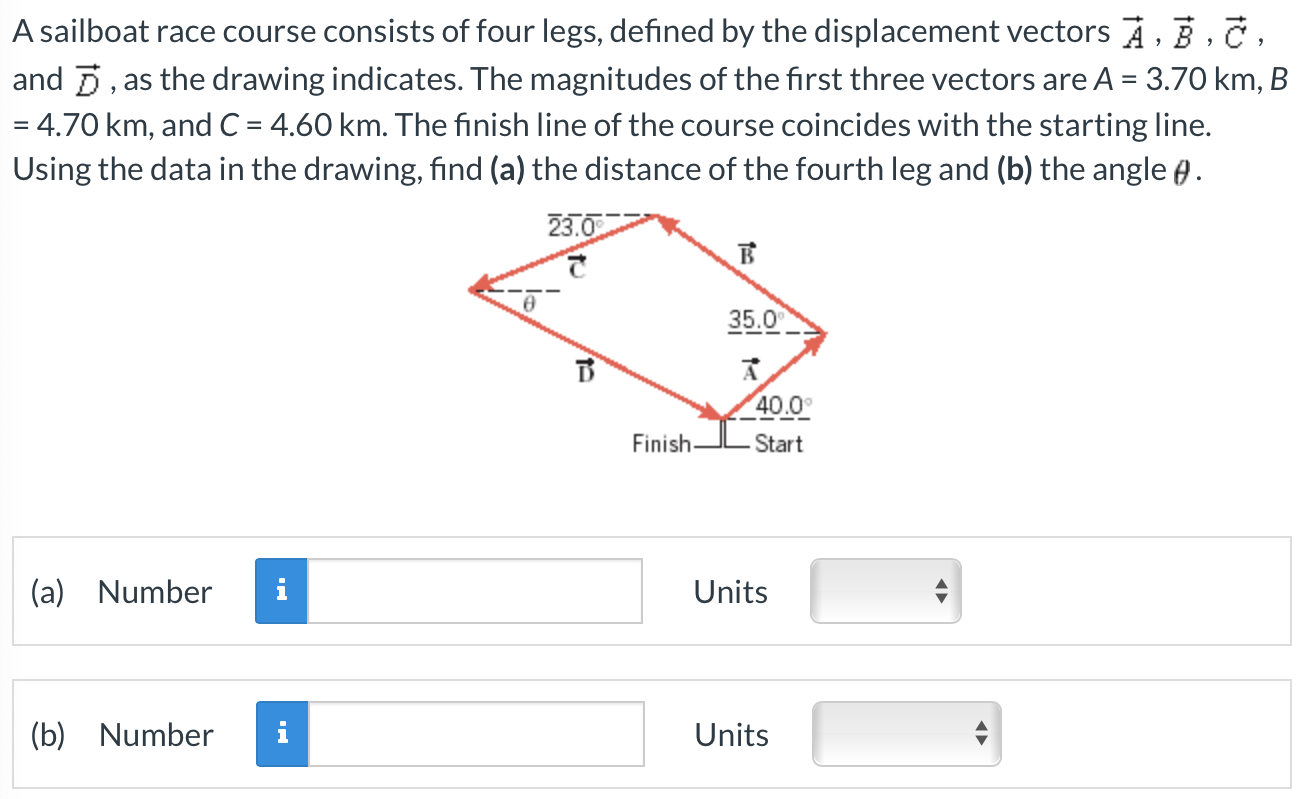A sailboat race course consists of four legs, defined by the displacement vectors A→, B→, C→, and D→, as the drawing indicates. The magnitudes of the first three vectors are A = 3.70 km, B = 4.70 km, and C = 4.60 km. The finish line of the course coincides with the starting line. Using the data in the drawing, find (a) the distance of the fourth leg and (b) the angle θ. (a) Number Units (b) Number Units
